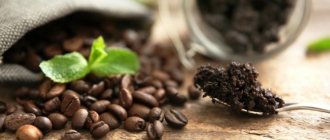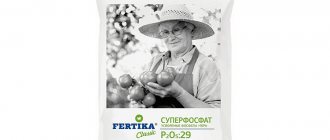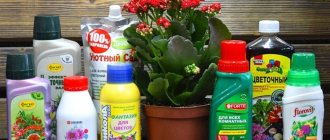Gardeners use milkshake for plants in the form of root or foliar feeding. In addition to the fact that milk has a large amount of nutrients, it effectively fights the spread of pests and pathogenic fungi in the garden.
The benefits of milk for the garden. The illustration for the article is used from open sources 721
Features of milk feeding
Milk not only provides plants with nutrients. It perfectly heals the soil and prevents the development of harmful bacteria by colonizing beneficial bacteria. It is they, by multiplying, that prevent the appearance of fungi and mold, which destroy the root system. Beneficial bacteria also help synthesize large amounts of minerals and phytohormones necessary for a healthy life.
In addition, insects do not digest milk sugar - lactose, because they do not have a pancreas. This is what makes milk a good protective agent.
In addition, milk promotes metabolism in the plant body and helps to absorb other beneficial substances found in the soil or added as fertilizer.
How not to harm plants?
If chosen and used incorrectly, even such a valuable product as whey can be dangerous for plants. The negative effects of feeding may be due to the following reasons:
Abundant watering .
When calculating the required amount of water, you need to take into account the liquid that comes to the roots along with fertilizers. Excess moisture in the soil leads to the development of rot and mold.- Violation of the acid-base balance of the soil .
To feed plants that require alkaline soils (adenium, myrtle, etc.), neutral fertilizers are chosen. A sharp change in pH can harm even those flowers that prefer slightly acidic soil. - Wrong choice of processing method . The serum can be used for root and foliar feeding, as well as for spraying against fungi. If the plant does not tolerate moisture at the roots or on the leaves, then the treatment will lead to its rotting.
- Using a low-quality product . Spoiled whey contains amino acid breakdown products and pathogenic microorganisms that can harm the plant.
- Using concentrated serum . To regulate the pH, the product must be diluted in a ratio of 1:3 to 1:10. Spraying and watering with undiluted serum leads to burns of leaves and roots. The optimal concentration depends on the method of application.
An acidic environment helps destroy fungi, but does not disrupt the activity of pathogenic bacteria. For parasitic and bacterial infections, the use of organic fertilizers can worsen the condition of flowers.
What plants is it suitable for?
Primroses, azaleas, geraniums, roses and ficus will express great gratitude in the form of a lush crown for milk feeding.
Preparing the mixture is very simple: mix a glass of milk with a liter of water in a jar, add a couple of drops of iodine. An hour before fertilizing, water with plain water, because milk cannot be added to dry soil. The usual rate for an average plant is no more than 5 tablespoons once every 14 days.
By the way, there are plants for which milk formula is contraindicated. These are palm trees, cacti and succulents.
Plants of the commelinaceae family respond best to this fertilizer: tradescantia, zebrina, golden mustache. Fertilization of the latter is especially valuable. After all, the golden mustache can be used for medicinal purposes, so you should not get carried away with mineral supplements when caring for it. Organic fertilizers are suitable, including those based on milk. However, milk water does not exclude the use of basic fertilizers. Plants need to be watered with it from time to time, in between applying ready-made fertilizers.
Chemical composition of the product and its effect on plants
The chemical composition of milk and its effect on vegetables and fruits:
- milk protein contains nitrogen, but not in the quantity and form to have a positive effect on plant growth;
- calcium and mineral composition improves the growth of vegetables and fruits;
- carbohydrates, lactose, fat are not necessary components for plant fertilizers;
- vitamin B, sugars have a beneficial effect on the growth of young plants.
Gardeners note that the composition of milk improves yield.
Spraying
Plants can be sprayed with the milk composition. Thanks to its properties, it forms a thin film that protects leaves and stems from insects, spider mites and scale insects. Experienced gardeners say that the product helps well in the fight against powdery mildew. A good way to replace chemicals with natural ingredients.
If there is little snow, there will be no harvest: December 16 is Ivan the Silent Day
It’s good to wash often: myths about shampoo and hair care that only harm
A student at the Vietnam Police Academy shared how she takes care of her facial skin.
Foliar feeding should only be done on a hot sunny day. Pour the mixture into an aerosol can and spray the leaves and stems. The sun's rays play an important role here, helping to activate and speed up the absorption of nutrients. Be careful. For example, tomatoes are very delicate plants and can simply get sick under too much milk. A day after treatment with milk, the plants should either be sprayed with water or wiped with a soft, damp cloth.
In addition, milk promotes “metabolism” in the plant body, i.e., it helps to absorb other beneficial substances found in the soil or added as fertilizing.
How to use milk solution?
Let's look at how to prepare a milk solution to control pests and protect against diseases.
From pests
Milk actively fights many pests in gardens. Let's look at the most effective recipes.
The following composition helps fight the Colorado potato beetle on potatoes:
- 7 liters of water;
- 2 tbsp. l. liquid soap;
- 3 l. milk;
- 10 ml of birch tar solution purchased at a pharmacy.
The prepared solution is mixed and applied to the potatoes. A thin film forms on its leaves, which prevents pests from eating them. Neither the larvae of the Colorado potato beetle nor the adults like it to taste.
Whey will help fight codling moth . We dilute the whey with water in a ratio of 1 to 1. Pour the solution into a plastic container. We hang it in the crown of a tree. Pests flock to the scent and drown in the trap. Once a week we make a new solution.
Read about using whey for watering indoor flowers here.
To protect against diseases
To protect against diseases, we prepare the following solutions:
- A composition of: 2 liters of milk, 8 liters of water, 2 tbsp. helps against late blight l. liquid soap, 10 ml iodine. Let it brew for 2 hours. Treatment occurs immediately after planting the plants in the ground. Then it is repeated every 10 days until harvest.
- For powdery mildew, prepare a solution of 2 liters of skim milk, 8 liters of water. Irrigate plants at the first appearance of the disease. Then every week until the harvest is ripe.
- For peronosporosis, a solution based on whey and water is used in a ratio of 1 to 1. Irrigation is carried out in the evenings once every 12 days.
The solution proposed below will help in the fight against the following pests:
- rot;
- powdery mildew;
- parasitic fungi;
- bacteriosis.
To prepare the solution we take:
- 15 drops iodine;
- 10 l. water;
- 1 l. milk.
Mix all the ingredients, pour into a bucket, spray on the leaves of the plants once every 2 weeks in the evening. It is important to choose a calm day so that there is no rain.
This solution is used not only to prevent diseases, but also to combat an already manifested disease. Most solutions for pests and diseases simultaneously improve the condition of plants and enrich the soil with nutrients.
Use in the garden
Milk is also useful for garden plants. Garden representatives will also be happy: cucumbers, tomatoes, all types of cabbage, especially during the ovary period. The milk solution also protects the garden well from insects, prevents the spread of pests and is an effective preventive measure.
Few people know, but milk also helps in the production of high-quality compost thanks to the same beneficial microorganisms that do not stop working, increasing the concentration of compost.
Lost weight: what Sofia Tarasova sacrificed for the sake of “VIA Gra” (new photos)
“We are still friends”: Derevianko commented on the breakup with his wife
Women's jeans: before you buy them, you need to pay attention to one detail
Spraying with a milk solution with added iodine is very good for tomato and pepper seedlings. They perfectly nourish and protect against many diseases and pests.
What milk to use
A reasonable question arises, what kind of milk to use for feeding. The ideal option will always be regular raw milk, not thermally treated. Of course, pasteurized milk can also be used, no one prohibits it, but heat treatment always destroys some of the nutrients. It is worth remembering this so as not to water the plants with an “empty” solution.
Now the shelves are littered with various types of milk, but most often they are made from a special concentrate, powder, which, in principle, is almost not saturated with nutrients. You can use this milk, but you need to start feeding it in small portions. Monitor the condition of the plant. If it shows signs of illness, immediately stop feeding it with mixtures made from such milk. In this case, it is better to return to chemical analogues.
How to cook
In addition to simple watering with diluted milk, multicomponent formulations are often used. Instead of milk, whey can be used as fertilizer.
Recipes:
- Iodine provides an enhanced nutritional effect. It is enough to add 10 drops per 10 liters of milk already diluted with water. In addition, iodine provides additional disinfection and helps cope with already manifested diseases.
- To speed up the maturation of compost, add a mixture of 3 components: 200 ml of water (preferably warm), dry yeast (half a pack) and 200 ml of whey.
- It is not necessary to fertilize the plants themselves if you first improve the soil fertility. To do this, place a 200 liter barrel:
- 3 liters of solution of yeast and sugar, necessarily 3 days, so that it ferments properly;
- ash, 1 shovel is enough;
- 0.5 buckets of manure;
- 1 shovel of compost;
- a bucket of plant humus;
- 1 shovel of sand;
- 1 liter of milk, whey or kefir;
- water.
The mixture should sit for at least a week, after which it can be used, after diluting it with water.
Feeding recipes
Any specialist will tell you that no liquid substance other than water should be added to plants in its pure form. This can lead to burns and damage to the root system. In addition, a high concentration of solutions does not guarantee a quick result: the plant will still not be able to absorb more than it needs. The rest will simply evaporate.
The money tree pleases with lush flowering: my secret is in caring for the leaves
Rare shot: Viktoria Isakova showed her grown-up daughter from Yuri Moroz (new photo)
"Dad is offended." Agata Muceniece about her relationship with Priluchny after the divorce
Milk is also not added in its pure form; it can seriously harm the plants. It is better to start with such a solution. In a liter of water at room temperature, stir a teaspoon of milk, pour everything into a bottle or watering can and water the flower. By the way, it is not recommended to store milk fertilizer in the refrigerator or on the window next to flowers, especially for a long time, since the nutrients are destroyed in the same way as during heat treatment. And in hot weather, milky water will emit an unpleasant odor and attract flies and midges. It's always better to make a fresh batch.
Another common recipe is a mixture of milk and molasses, which protects the plant from weeds. Thanks to the active interaction of milk and molasses, phosphorus is released, which is a destructive environment for weeds.
We prepare the solution from three tablespoons of molasses, 0.5 liters of raw milk and 2 liters of water. Mix everything to a homogeneous consistency, pour it into a spray bottle and cultivate the ground before planting a garden crop or home flower. It is convenient to do this during the next transplant.
Leaf cleaner
Both indoors and outdoors, dirt can accumulate on leaves. While this is unlikely to kill the plant, it can clog their pores and make breathing difficult in some conditions. For these and aesthetic reasons, you may want to clean your flower regularly. While this is fine with water, using milk to clean plant leaves can add extra shine.
To clean plant leaves, make the same milk and water solution as before. Spray onto leaves and wipe with a clean cloth. Repeat if dirt remains or if you need more shine.
Other dairy products
Inexperienced flower growers may think that since milk can be used as a top dressing, then other dairy products, such as kefir or sour cream, are equally useful. Don't be misled. These products are not suitable for feeding because they have a different composition and consistency from raw milk. These are heat-treated products, so they will not bring the expected benefits. Better eat it yourself.









